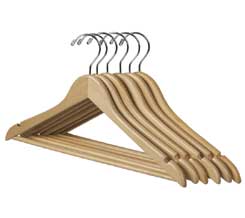One of the most inherently problematic props, in terms of issues with authenticity, are of the “off the shelf” or “found” variety.
What are “off the shelf” props?
Props, wardrobe pieces, set pieces, and any other artifacts used in a production that are:
1) Mass produced (past or present),
2) for non-production purposes (i.e. not specifically manufactured for use in the production), and
3) are or were available for purchase from those not associated with the production.
Off the shelf props and wardrobe are used extensively in film and television, simply as a matter of economics.
It is obviously cheaper to buy, for instance, wardrobe pieces for a modern day comedy or drama from retail stores than it is to hire a costume designer to design and manufacture wardrobe for an entire production.
It is also common for everyday props and set pieces to be acquired through traditional means, unless the script calls for something out of the ordinary, or in films and television programs set in the future. Even those works set in the past will often find real world vintage pieces for use, such as film set in World War II, rather than create from scratch, as they will often do in works set in earlier times in which artifacts are not available or prohibitive as to use do to value and rarity.
So why are the use of such pieces problematic for original prop collectors?
Unfortunately, it can be difficult to impossible to distinguish an off the shelf piece used in a movie or TV show versus the same item purchased from a retail store. As an example, Hollywood Vault or Premiere Props may sell a variety of off the shelf items from a production, with a studio COA. But once it leaves them and becomes the property of a collector, it really comes down to the word and reputation of that first collector, should he or she offer it for sale again in the marketplace, as to whether it is that same piece acquired directly from the studio reseller, or if it has been replaced with the same item purchased at a store, and paired with the valid studio COA. The more times the piece changes ownership and custody, the more risk involved as to knowing whether it is authentic.
So, in short, acknowledging all other risks involved in the acquisition of original props, any off the shelf piece contemplated, from a source other than the studio reseller, incorporates additional risk on top of all other considerations. Unfortunately, in most cases, this risk cannot be mitigated through the research of the prop itself, unless it is marked/distressed/altered in some way that can be matched to what is seen on screen (i.e. a “screen-match”). Also, for those that acquire such a piece directly from a studio reseller, resale of such an item can be problematic as well as a result of these concerns.
There are some circumstances in which a piece can be vetted – as an example, the value of the found or off the shelf piece may exceed the value of the same piece as original prop or costume. An example of this would be a designer dress that is distressed, making it undesirable to someone interested in the piece for what it was originally intended, but as an artifact from the film, the distressing would be irrelevant to value (or perhaps even add value). Another example would be the rarity of the item, or the unlikely chance that a variety of rare “found” pieces being assembled into one package/costume/etc.
In short, the intent of this article is to persuade collectors to give addition thought and concern to those off the shelf and found pieces. Another critical consideration is to be aware of those sellers that offer an abundance of off the shelf offerings, or multiples, in that it may be a red flag.
Jason De Bord

